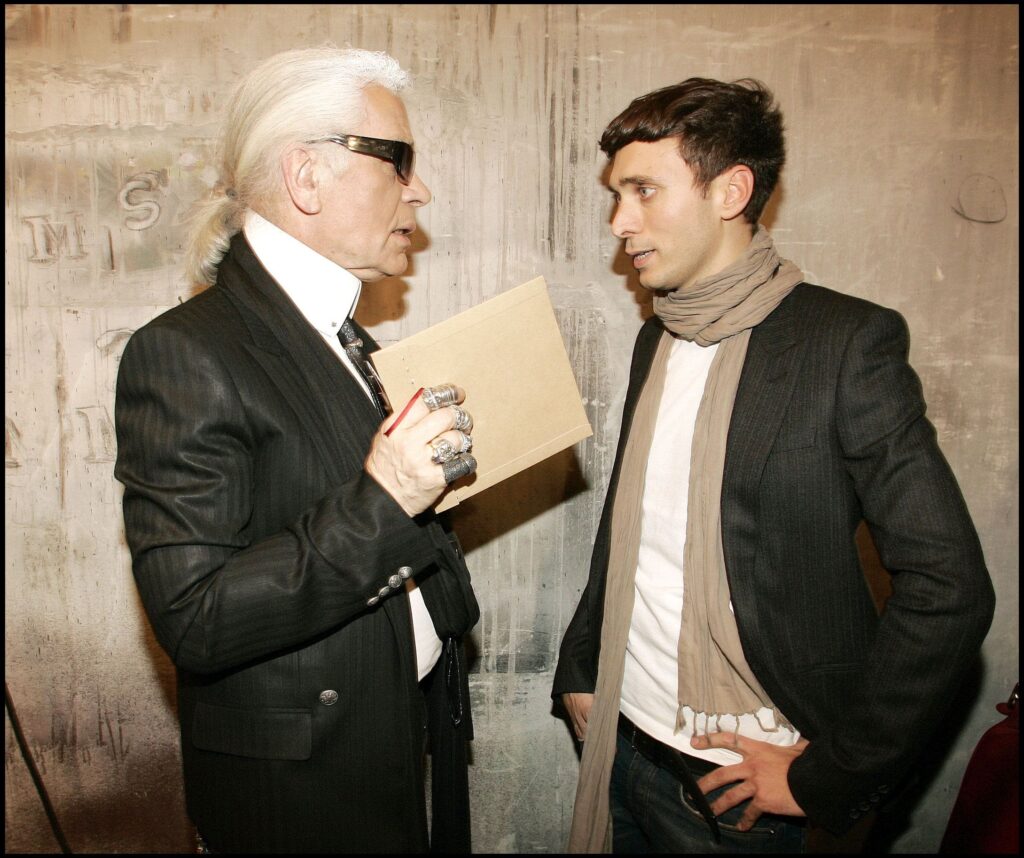When news broke this week that Hedi Slimane was leaving CELINE, rumors swirled that he could be a candidate for CHANEL’s artistic helm. But for a house that has embodied enduring elegance, boundary-pushing innovation, and timeless sophistication, Slimane could be exactly what CHANEL doesn’t need.
1. Slimane Can Only Do Slimane—And That’s the Problem
Let’s be blunt: Slimane has one mode, and it’s Slimane’s. His “style” isn’t merely distinctive; it’s unyielding and repetitive. Since his early days at Dior Homme, Slimane has been dressing his collections with the same formulaic aesthetic: skinny silhouettes, distressed denim, vintage rock vibes. Season after season, his adherence to a narrow, self-referential style has made him a polarizing figure, sticking to the same elements with a tenacity that’s more stubborn than visionary. It’s baffling that a designer of his stature hasn’t launched his own brand, but perhaps he’s aware that his creative playbook has its limits—and those limits couldn’t be more at odds with CHANEL’s heritage of reinvention.
2. Slimane’s Approach: A Potential Threat to CHANEL’s Legacy
For CHANEL, the arrival of a designer who bulldozes existing brand codes and establishes his own brand within the brand would be nothing short of cultural vandalism. Slimane’s well-documented approach to previous roles has followed a predictable path: erase the heritage, neutralize the identity, and replace it with his trademark rock-meets-bohemian vibe. CHANEL’s ethos has always centered on honoring its past while daringly innovating for the future. The thought of Slimane turning the storied CHANEL runway into a parade of ripped denim and Chelsea boots should make any CHANEL devotee shudder.
3. Slimane’s Notoriously Difficult Personality
It’s no secret in the industry that Slimane can be challenging. Former colleagues and insiders have painted a picture of a leader with a demanding, often inflexible nature—a stance confirmed by respected fashion journalist Cathy Horyn. His reputation for being unapproachable could clash disastrously with CHANEL’s collaborative, almost familial workshop culture, where master artisans, or “petites mains,” work closely with designers to craft each collection. Slimane’s rigid, often closed-off demeanor doesn’t mesh with the humility and respect for heritage that CHANEL’s ateliers require to flourish.
Is There a Brighter Alternative for CHANEL?
CHANEL deserves someone who can embrace its legacy while bringing new energy, not someone who will imprint the House with an unrelenting, self-branded aesthetic. Thom Browne, for instance, is an intriguing option: his talent with tailoring, tweed, and couture aligns beautifully with CHANEL’s core, and his knack for balance between innovation and tradition could breathe fresh air into the House. Or, even better, CHANEL could surprise us all by appointing a rising, visionary talent unafraid to interpret CHANEL codes through a lens of creativity and reverence, rather than reshaping them entirely.
Ultimately, CHANEL needs a leader who sees themselves as a custodian of the brand, not an overlord. Slimane’s unwavering devotion to his own vision and disregard for brand heritage make him a risky candidate for the House of CHANEL, where the clothes are iconic, and the legacy demands respect and innovation in equal measure.



